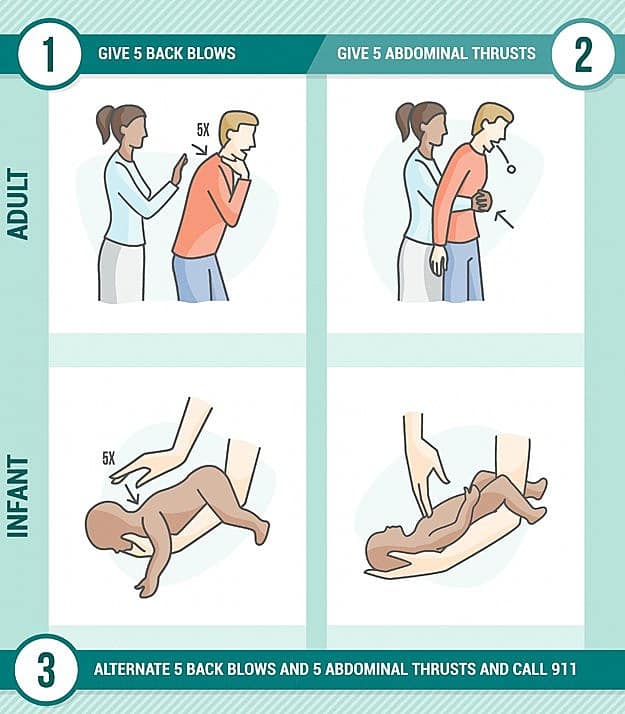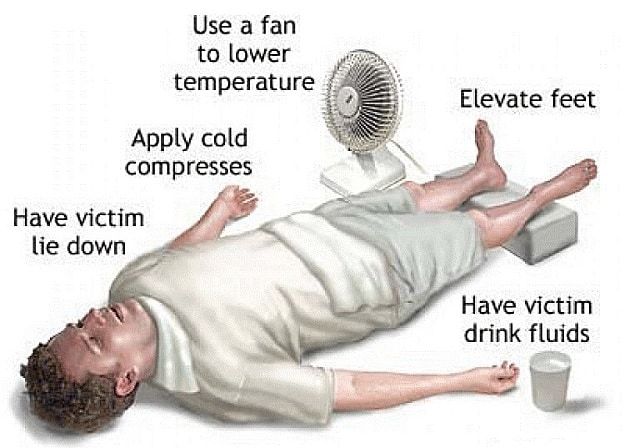Knowing first aid and CPR can mean the difference between life and death for you and others around you, be it a relative or a stranger. Find out how to deal with emergency situations and learn to apply first aid and CPR as a vital homesteading skill!
A Homesteader's Guide to First Aid and CPR
Being a homesteader means being self-sufficient, not just in everyday tasks but in every aspect of your life. It includes learning how to deal with accidents and emergency situations, especially first aid and CPR. You never know when an accident will befall you or a family member so it's always good to know what to do in case of an emergency. These tips, ideas, and short guide will help you deal with emergencies from minor accidents to critical ones.

1. Keep A First Aid Kit Handy

Knowing basic first aid is one thing but having the right equipment to perform first aid is another. You don't have to have everything, just the basic supplies will help you do the job. Here are some of the common items your first aid kit must have:
- Alcohol or non-alcohol antiseptic wipes
- Bandaids
- Cotton balls
- Cotton swabs
- Iodine
- Bandages
- Hydrogen Peroxide
- Gauze
- Saline
- Dressings
- Mask and gloves
- Scissors and tweezers
2. DRSABCD Action Plan

Know the basic action plan for any emergency situation. Assess the danger first, respond and always ask for help. Remember that knowing first aid doesn't make you a health care professional. For severe cases, getting the patient to a hospital is always important.
3. Choking

Find out what the signs of choking are. If the person can't talk, breathe, cough or is turning blue or dusky, these are definitely telltale signs that the person is choking. Remember adults and infants are treated differently when responding to a choking incident. For adults, the abdominal thrust or the Heimlich maneuver is commonly applied.
4. Poisoning

Don't try to induce vomiting in a person whose taken poison–this won't help and will matter even worse. The best thing you can do it stay calm, try to determine what and how much they took in, and call for help.
5. Burns

Hopefully, you'll only encounter minor burns, but if someone or you caught fire, don't forget the basic “STOP, DROP and ROLL”. For minor burns, do the following steps to help relieve pain and apply necessary treatment:
- Let cool water run over the burnt part for 10 to 30 minutes.
- Don't apply ice, ice water, creamy or greasy stuff like butter.
- Cover the burn with cling film and treat pain with paracetamol or ibuprofen.
- Go to the hospital immediately for serious burns and electrical or chemical burns.
6. Bleeding Wounds

Cuts and wounds are normal which nothing a home first aid kit can handle. In the case of deep cuts where bleeding won't stop, applying pressure is a must until help arrives. Keep the bleeding part of the body elevated above heart level.
7. Broken Bone

Depending on how the bone was broken, there are different methods on how to administer first aid. Assess the situation first, then call for help before you address or apply necessary actions which are as follows:
- Provide CPR if necessary in cases where the injured person is not breathing and you can't feel a pulse on the wrist or neck.
- If the injured part is bleeding, you must try to stop the bleeding whether there's a fracture or not.
- Apply means to make the injured part immobile with a piece of stiff cardboard and a stick.
- Apply ice to the injury and watch for signs of shock.
8. Heat Stroke

With global warming, heat has become almost unbearable nowadays, even leading to multiple casualties in several countries. Heat stroke can be serious and your knowledge and presence of mind in this situation can help you or help you save lives.
9. CPR or Cardiopulmonary Resuscitation

There are many emergency cases when CPR may be necessary, just take choking, for instance. Knowing the basics will not make you a pro, but having an idea of what to do can still help.
10. Bug Bites and Stings

Anyone who has spent time outdoors would know how common insect bites are. If it's not just mosquito bites, better be equipped with the basic first aid treatment. Different insect bites will call for different responses, especially toxic insect bites in some spider species. If a person has allergic reactions to insect bites, this may become even more serious.
- Immediately call for help and stay calm so the people attending to your call can better assess your situation.
- Wash the area with soap and water and place cold compress to avoid swelling and help reduce pain.
- Apply calamine lotion or baking soda paste or as advised by medical professionals.
11. Snake Bite

Snakes are sneaky little critters and will almost always catch you off guard. Well, don't be caught in this situation completely clueless but know the basic first aid treatment for snake bites.
12. Sprains And Strains

Do you know what RICE is? It's the basic first aid for sprains and strains until a trained professional arrives or when you get the patient to the hospital. Remember RICE: Rest, Ice, Compression and Elevate.
13. Nosebleeds

Nosebleeds are just minor injuries but some people tend to freak out at the sight of blood. Know exactly what to do in this situation as illustrated here. Remember not to keep on removing your thumbs from squeezing the nose to check if the bleeding has stopped. Blood needs to clot and it will take some time.
Watch this video for a more detailed emergency response with first aid and CPR:
Even if you know much about first aid, it's still best to avoid these kinds of situations when you can. Prevention is always better than cure, but in case you do get into an emergency situation, regardless of what you've learned it will not matter if you panic. Always stay calm, have a level head and put what you've learned about first aid and CPR into action!.
What do you think of these basic first aid tips? Let us know what your thoughts are on the comments section below!
Check out these simple household items you didn't know can be first aid items to use in an emergency here.
Follow us on Instagram, Twitter, Pinterest, and Facebook!
This post was originally published in June 2015 and has been updated for quality and relevancy.

Leave a Reply